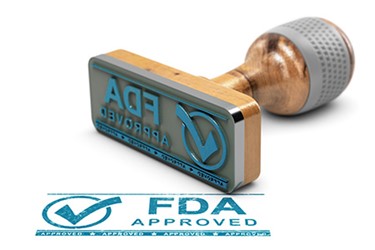CDER: Continuous Shouldn't Be Continuously Delayed

By Louis Garguilo, Chief Editor, Outsourced Pharma

The FDA wants continuous processing, but that flow gets stuck in the upper echelons of biopharma companies (see our first editorial here.)
To help unstick it, the Center For Drug Evaluation And Research (CDER) recently resorted to emailing a Regulatory Science Impact Story, entitled “Transitioning To Continuous Manufacturing.”
CDER lists some advantages of CM (after reminding us our industry has been stuck in “batch” since the ‘60s):
- Eliminates manual handling and human error
- Increases quality assurance through online monitoring and control
- Reduces manufacturing time and increases efficiency
- Reduces capital costs by using smaller equipment and less manufacturing space
- Responds more nimbly in the event of a drug shortage
- Allows manufacturers to tailor drug production to fit the needs of precision medicine
The agency further waxes wonderfully:
“Continuous manufacturing is reliable - there are no breaks between steps, so there are fewer opportunities for human error. Further, online monitoring means quality assurance testing can take place during the manufacturing process.”
“In some cases, manufacturing that takes a month with batch technology might take only a day with continuous manufacturing.”
CDER reminds us it sponsors research, including “funding of CONTINUUS Pharmaceuticals to better understand process monitoring and control approaches in an end-to-end continuous manufacturing process, from the synthesis of the active pharmaceutical ingredient (API) through to the final tablet.”
And don’t forget, the agency partners with stakeholders to promote the development and use of continuous manufacturing, and to “address the challenges drug manufacturers face in implementation.”
Ah … the challenges. Here’s some of what pharmaceutical executives say about those.
A Future Away
Even with five FDA-approved drugs that utilize CM now on the market, the technology still gets spoken about as chockfull of challenges.
Consider this article from Life Science Leader’s annual Industry Outlook 2019 issue. In The Future Of Biopharma Hinges On The Ability To Manufacture, two SVPs at Big Pharma mention CM and it’s promise, but site international regulatory agencies and other problems postponing a fuller adoption on the technologies.
Tom McCubbins, SVP global pharmaceutical operations, Merck:

Christopher Sinko, SVP, head of product development, Bristol-Myers Squibb:

Are We Distracted?
Besides international regulatory barriers, technology development and shear inertia delaying CM, could it also be this: We’ve simply become distracted. Particularly, as we fight our way to keep up with the connectivity and digitization apparent in other industries.
There’s certainly a case for that. Fast-forward a month after those year-end prognostications, to another LSL article, From Industry 4.0 To Pharma 4.0, in which there is not even mention of CM.
Instead, it’s all digital dogma. (Done very nicely, of course.)
Are AI/AR, deep data, data integrity and the like so much on the mind we’re leaving behind the nuts-and-bolts of processing and manufacturing – which should both time generate and take advantage of industry advancements?
I put that question to Professor Bernhardt Trout of MIT.

Trout continues: “There’s so much great data and information within companies. The problem is their systems don't harness it very well; they understand that. Big companies have digital strategies, and most important is finding ways of analyzing all the data. You need to have the underlying data, and an understanding of what it means.
“You can’t say, ‘Alexa, design me a drug. Design me the manufacturing process,’ and three years later you have vials coming out that are FDA-approved.
“Everybody's on this industry 4.0 trend, but what does it mean for the bio and pharma industry? Shouldn’t it mean implementing technologies like continuous manufacturing? They should all sync with company digital strategies.”
CDMO Leadership
As I was writing this, news from FUJIFILM Corporation headquarters in Tokyo hit my desk. The company just announced “an initial $10M USD investment to establish a full scale, fully integrated continuous processing facility for non-GMP manufacture of biopharmaceuticals at its FUJIFILM Diosynth Biotechnologies, Billingham, UK location.”
The press release went on to say: “This perfusion based facility represents the culmination of 3 years of in-house innovation … and includes the introduction of patented, disruptive downstream bioprocessing technology to the biopharmaceutical industry.”
Of course we know with drug development and manufacturing outsourcing, it can be a cart-before-the-horse scenario: Important biopharma customers need to press service providers to implement new technologies, but at the same time CDMOs want to gain competitive advantage by leading the way. Either way, with the biopharma companies finally paying more attention to CM, and the service providers also implementing the technologies, we could be heading for the more full-scale adoption we had expected.
“Things go step-by-step-by-step,” concludes Trout, on a note of optimism. “Then suddenly the reservoir reaches the top and pours over. You have a whole new river flowing.”
A continuous river, perhaps.
